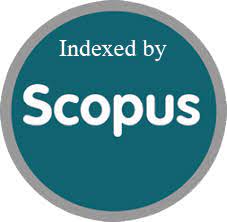An Ensemble Machine Learning-Based Classification for Cardiovascular Disease Prediction Using PCA and SVM with Bagging
DOI:
https://doi.org/10.52783/jns.v14.4019Keywords:
Cardiovascular disease, Machine Learning, PCA, Bagging, Random Forest, SVM, Logistic RegressionAbstract
Background: Cardiovascular diseases (CVD) remain the leading cause of mortality worldwide, highlighting the need for accurate and timely diagnosis. Machine learning has emerged as a promising tool for enhancing predictive accuracy in medical diagnosis.
Objective: This research aims to predict cardiovascular diseases using various machine learning algorithms applied to the Erbil Cardiovascular Health Dataset (Clinical data) from Mendeley. The objective is to improve prediction accuracy through ensemble learning and to extract the feature for better results and by calculating the feature importance.
Methods: The study involves data pre-processing using regression based filling by calculating mean, median for missing values, feature extraction using Principal Component Analysis (PCA), and for classification we are using the feature extracted dataset and applying Random Forest, Support Vector Machine (SVM), and Logistic Regression (LR). An ensemble method, bagging, was introduced to enhance model robustness and accuracy.
Results: The ensemble models demonstrated improved accuracy compared to independent models. Support Vector Machine with Bagging achieved 97% accuracy, Random Forest with Bagging reached 92%, and Logistic Regression with Bagging achieved 95%. Independent models without bagging showed lower accuracies: Support Vector Machine at 91.04%, Logistic Regression at 88.06%, and Random Forest at 83.58%. The effective of the ensemble method is evaluated using accuracy, precision, recall, log loss f1score.
Conclusion: The results indicate that machine learning models, especially ensemble methods, Support Vector Machine with Bagging achieved highest accuracy of 97% among the other algorithms and it can significantly enhance the early diagnosis and management of cardiovascular diseases, thereby improving patient care and outcomes.
Downloads
Metrics
References
Anjum N, Siddiqua CU, Haider M, Ferdus Z, Raju MA, Imam T, Rahman MR. Improving cardiovascular disease prediction through comparative analysis of machine learning models. Journal of Computer Science and Technology Studies. 2024 Apr 20;6(2):62-70.
Ogunpola A, Saeed F, Basurra S, Albarrak AM, Qasem SN. Machine learning-based predictive models for detection of cardiovascular diseases. Diagnostics. 2024 Jan 8;14(2):144.
Saikumarº K, Ravindra PS, Sravanthiº MD, Mehbodniya A, Webberº JL, Bostani A. Heart Disease Prediction using Machine Learning and Deep Learning Approaches: A Systematic Survey. Heart Disease. 2025;35(2s).
Pal P, Grover V, Nandal M, Gochhait S, Singh HV. Artificial intelligence driven intelligent computational model for heart disease prediction: Leveraging feature selection. In2024 ASU International Conference in Emerging Technologies for Sustainability and Intelligent Systems (ICETSIS) 2024 Jan 28 (pp. 1422-1428). IEEE.
Rao GS, Muneeswari G. A Review: Machine Learning and Data Mining Approaches for Cardiovascular Disease Diagnosis and Prediction. EAI endorsed transactions on pervasive health and technology. 2024 Mar;10.
Mienye ID, Jere N. Optimized ensemble learning approach with explainable AI for improved heart disease prediction. Information. 2024 Jul 8;15(7):394.
Oyewola DO, Dada EG, Misra S. Diagnosis of cardiovascular diseases by ensemble optimization deep learning techniques. International Journal of Healthcare Information Systems and Informatics (IJHISI). 2024 Jan 1;19(1):1-21.
Li C, Liu X, Shen P, Sun Y, Zhou T, Chen W, Chen Q, Lin H, Tang X, Gao P. Improving cardiovascular risk prediction through machine learning modelling of irregularly repeated electronic health records. European Heart Journal-Digital Health. 2024 Jan;5(1):30-40.
Massari HE, Gherabi N, Mhammedi S, Ghandi H, Bahaj M, Naqvi MR. The impact of ontology on the prediction of cardiovascular disease compared to machine learning algorithms. arXiv preprint arXiv:2405.20414. 2024 May 30.
Manikandan G, Pragadeesh B, Manojkumar V, Karthikeyan AL, Manikandan R, Gandomi AH. Classification models combined with Boruta feature selection for heart disease prediction. Informatics in Medicine Unlocked. 2024 Jan 1;44:101442.
World Health Organization. WHO Cardiovascular Diseases. Available online: https://www.who.int/health-topics/cardiovascular-diseases#tab=tab_1 (accessed on January 2025).
Mishra J, Tiwari M. IoT-enabled ECG-based heart disease prediction using three-layer deep learning and meta-heuristic approach. Signal, Image and Video Processing. 2024 Feb;18(1):361-7.
Mondal S, Maity R, Omo Y, Ghosh S, Nag A. An efficient computational risk prediction model of heart diseases based on dual-stage stacked machine learning approaches. IEEE Access. 2024 Jan 8;12:7255-70.
Reza-Soltani S, Alam LF, Debellotte O, Monga TS, Coyalkar VR, Tarnate VC, Ozoalor CU, Allam SR, Afzal M, Shah GK, Rai M. The role of artificial intelligence and machine learning in cardiovascular imaging and diagnosis. Cureus. 2024 Sep 2;16(9).
Tompra KV, Papageorgiou G, Tjortjis C. Strategic machine learning optimization for cardiovascular disease prediction and high-risk patient identification. Algorithms. 2024 Apr 26;17(5):178.
Jha KM, Velaga V, Routhu KK, Sadaram G, Boppana SB. Evaluating the Effectiveness of Machine Learning for Heart Disease Prediction in Healthcare Sector. J Cardiobiol. 2025;9(1):1.
Husnain A, Saeed A, Hussain A, Ahmad A, Gondal MN. Harnessing AI for early detection of cardiovascular diseases: Insights from predictive models using patient data. International Journal for Multidisciplinary Research. 2024;6(5).
Hamarash, Ibrahim; Amen, Shwan; Rasool , Banan; Ahmed, Hangaw (2024), “Erbil Cardiovascular Health Dataset (ECHD) ”, Mendeley Data, V2, doi: 10.17632/396fd9yp6m.2
Economic Times. (2024, March 28). Leading the clean energy transition: How women are pioneering change in the sector. The Economic Times. https://economictimes.indiatimes.com/industry/renewables/leading-the-clean-energy-transition-how-women-are-pioneering-change-in-the-sector/articleshow/120055970.cms
Downloads
Published
How to Cite
Issue
Section
License

This work is licensed under a Creative Commons Attribution 4.0 International License.
You are free to:
- Share — copy and redistribute the material in any medium or format
- Adapt — remix, transform, and build upon the material for any purpose, even commercially.
Terms:
- Attribution — You must give appropriate credit, provide a link to the license, and indicate if changes were made. You may do so in any reasonable manner, but not in any way that suggests the licensor endorses you or your use.
- No additional restrictions — You may not apply legal terms or technological measures that legally restrict others from doing anything the license permits.










